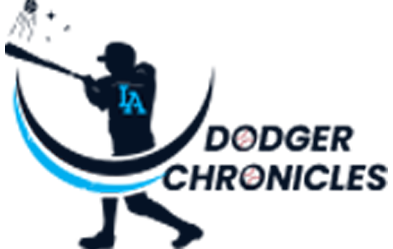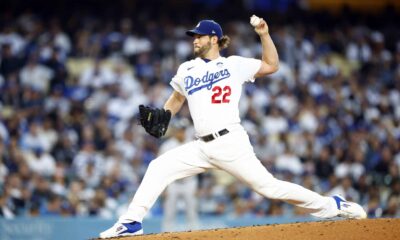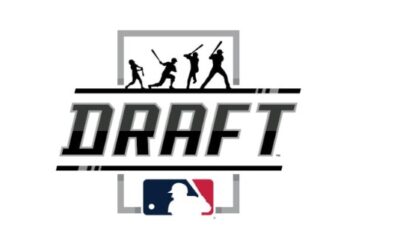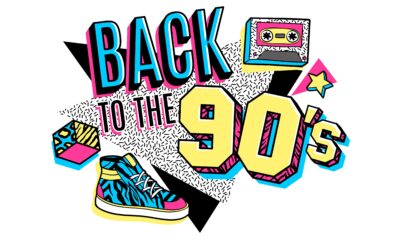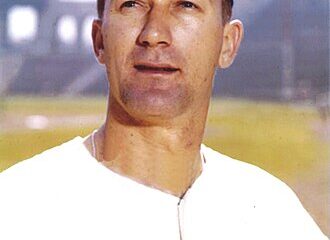Undrafted Free Agents
Each year following the MLB First-Year Player Draft a number of undrafted players are signed by MLB clubs. As with drafted players they do not all make it to MLB but some do. I tend to follow those players as they begin professional careers and each year hope there will be another Justin Bruihl who was signed as an undrafted free agent by the Dodgers in 2017.
With little to no leverage and age often playing a huge factor, many professional baseball organizations sign players as free agents, where the maximum bonus amount is $20,000.
During the 2020 signing season I expected the Dodgers to dive head first into the undrafted free agent market as there were only five rounds in the actual First-Year Player Draft.
However, Dodgers vice president of amateur scouting, Billy Gasparino, lowered my expectations.
“I’m just not sure. I think you guys know as well as I do, $20,000 is just a lot different than what these players are used to getting late in the Draft. I just don’t know what they’re going to think.”
“We have a couple seniors that we’ve identified as guys we want to go after, but we feel good about the players we have in our system. So there is a line of talent that it’s going to have achieve for us to make a signing. We’re just not going to go randomly sign guys. There’s no real need.”
The Red Sox signed the most undrafted free agents in 2020 with 16 followed by the Cincinnati Reds with 15. The Dodgers signed two right-handed pitchers, in 2020, Robbie Peto out of Stetson and Cole Percival out of UC Riverside. Both pitchers are currently working on their stripes with the Great Lakes Loons (Peto just being promoted).
Following the 2021 draft with 20 rounds, I expected that the Dodgers would sign a minimum of undrafted free agents. The Angels signed a whopping 23 young players following the draft while the Dodgers surprisingly came second with 11.
Jack Dreyer, LHP, Iowa, DNP (injury)
Jonathan Edwards, RHP, Georgia Southern
Kyle Froemke, INF, Oregon State
Austin Gauthier, SS, Hofstra
Max Hewitt, C/INF, Oklahoma State
Gaige Howard, OF, New Orleans
Griffin Lockwood-Powell, C, Central Michigan
Orlando Ortiz, RHP, Troy
Adam Scoggins, LHP
Francisco Mateo, RHP
Garrett McDaniels, LHP, Mount Olive (N.C.)
Six of the 11 are pitchers which is no surprise. Only two of the 11 have surfaced so far with Austin Gauthier splitting time at shortstop and second base with the Rancho Cucamonga Quakes and Adam Scoggins on the mound with the Great Lakes Loons.
MiLB Players of the Month for April
https://www.milb.com/milb/news/minor-league-baseball-april-players-of-the-month
On Wednesday, May 4, Minor League Baseball announced the Player and Pitcher of the Month Award winners for April in each of the 11 leagues in Major League Baseball’s player development system.
Oklahoma City Dodgers right-hander Ryan Pepiot claimed Pitcher of the Month for April in the Pacific Coast League. He went 2-0 with a 1.66 ERA in five starts. He allowed 14 hits and struck out 29 over 21.2 innings and held opponents to a .182 batting average.
Outfielder Damon Keith was selected as the Player of the Month in the California League. He led the league in on-base percentage (.519), slugging percentage (.672) and OPS (1.191) and was second in average (.391), hits (25) and runs (19). He finished third in triples (two) and fourth in total bases (43).
Triple-A Championship
After a two-year hiatus due to Covid Triple-A championship baseball returns.
On Tuesday Minor League Baseball announced that the Las Vegas Aviators will host the inaugural Triple-A Triple Championship Weekend on Sept. 30 through Oct. 2, 2022, at Las Vegas Ballpark in Summerlin, Nevada.
The new postseason format leaves little room for error with three, winner-take-all games to crown the 2022 champions.
The three-game series will begin with the division winners of the PCL West and PCL East squaring off for the league championship on Sept. 30 at 7:05 p.m. PST.
On Saturday, Oct. 1, the International League East and West division winners meet to determine the International League champion at 6:05 p.m. PST.
The two league champions will then meet on Oct. 2 at 4:05 p.m. PST to determine the overall Triple-A National Champion.
New Metric – CSW
I recently ran into a new pitching metric. Well, new to me at least. Its birth year was 2018 so it is not all that new to those in the know. I am far from a baseball metric geek so I will not attempt to suggest its value as a barometer for pitchers, especially young pitchers. I will just put out what I accidentally found while checking in on the MLB Draft League. It does seem like a more simple formula than say WAR, for instance. Perhaps this will be the new performance predictor for MiLB pitchers.
The mystery metric is CSW which stands for Called Strikes + Whiffs. Now that does sound simple as both can just be counted.
CSW was created by Alex Fast and Nick Pollack whose describes himself as a baseball writer with deep Product Manager skills who splits his time as the founder of PitcherList.com and Director of Website Operations at FilmRise.
Called Strikes + Whiffs/Total Pitches (called strikes+whiffs divided by number of pitches) = percentage
The following description is not mine but borrowed from Nick and Jon Anderson
It takes into account called strikes, swinging strikes (including blocked ones), swinging pitchouts and foul tips into the glove while excluding foul balls. While the formula may seem rudimentary, the implications are far from it. CSW rate is a simple, fine-tuned and, most importantly, predictive metric that gives us a better glimpse into the true skill of a pitcher.
Jon Anderson writes the following.
“Called Strike Plus Whiff rate (CSW) can help you identify potential breakout pitchers before others do.
Called Strike Plus Whiff Rate (CSW) is a new statistic that has popped up in the last few years that takes pitcher metrics one step further. Everybody is probably familiar with Swinging Strike Rate, which is simply the number of swinging strikes a pitcher gets divided by the total number of pitches they throw.
By adding in called strikes to this calculation, we now give credit to pitchers for strikes thrown that aren’t swung at. This makes sense because a called strike is just as effective as a swinging strike. While it is certainly easier to get a called strike than a swinging one (given that hitters decide to take many pitches before they even leave the pitcher’s hand), it still makes sense to have a metric that gives credit to those called strikes.
CSW rate is a simple stat but a predictive and descriptive measure of a pitcher’s true skill. It has an extremely strong correlation with both strikeout rate and ERA to a lesser extent. League average usually sits around 29 percent. “
The PL guys define these CSW% bins: 40+% elite, 30-35% good, < 25% is a red flag.
I had intended to stop with just that brief introduction to CWS but then ran into this clip with Julio Urias who, of course, is now an established MLB pitcher.
Julio Urías –CSW Fast Riser
https://ouresquina.com/2021/dodgers-lefty-julio-urias-fulfills-ace-potential/
Among CSW rate risers from 2020 to 2021 Dodger left-hander Julio Urías is in elite company. That is the assessment of Chris Clegg at Fantrax HQ who describes the ascension of Urias in this metric.
“Of any starter in baseball, Julio Urías has seen the largest jump in CSW% from 2020. Last season, Urías’ CSW% sat at a pedestrian 25.7% but saw that number rise to 34.4% in 2021. That places him fourth in baseball, behind only Corbin Burnes, Gerrit Cole, and Jacob deGrom. Some elite company!
The former top prospect has made significant strides thanks to the increased curveball and changeup usage. Urías’ curveball has been an effective pitch on getting hitters to chase on pitches out of the zone and has induced a 34.6 percent whiff rate. His changeup has also seen an increased whiff rate this season.
Another factor with Urías’ increased CSW% is him pounding the zone more often. He has seen 76.9 percent of his first pitches go for strikes. His zone rate is up in general as well. When he does avoid the zone, hitters have a 36 percent chase rate.
Urías has also seemed to be freed from the innings limit the Dodgers have put on him throughout his career. He has pitched seven innings four times in 2021 and 6.2 innings in another start. Before this season, Urias had never thrown seven innings in a single outing.”
